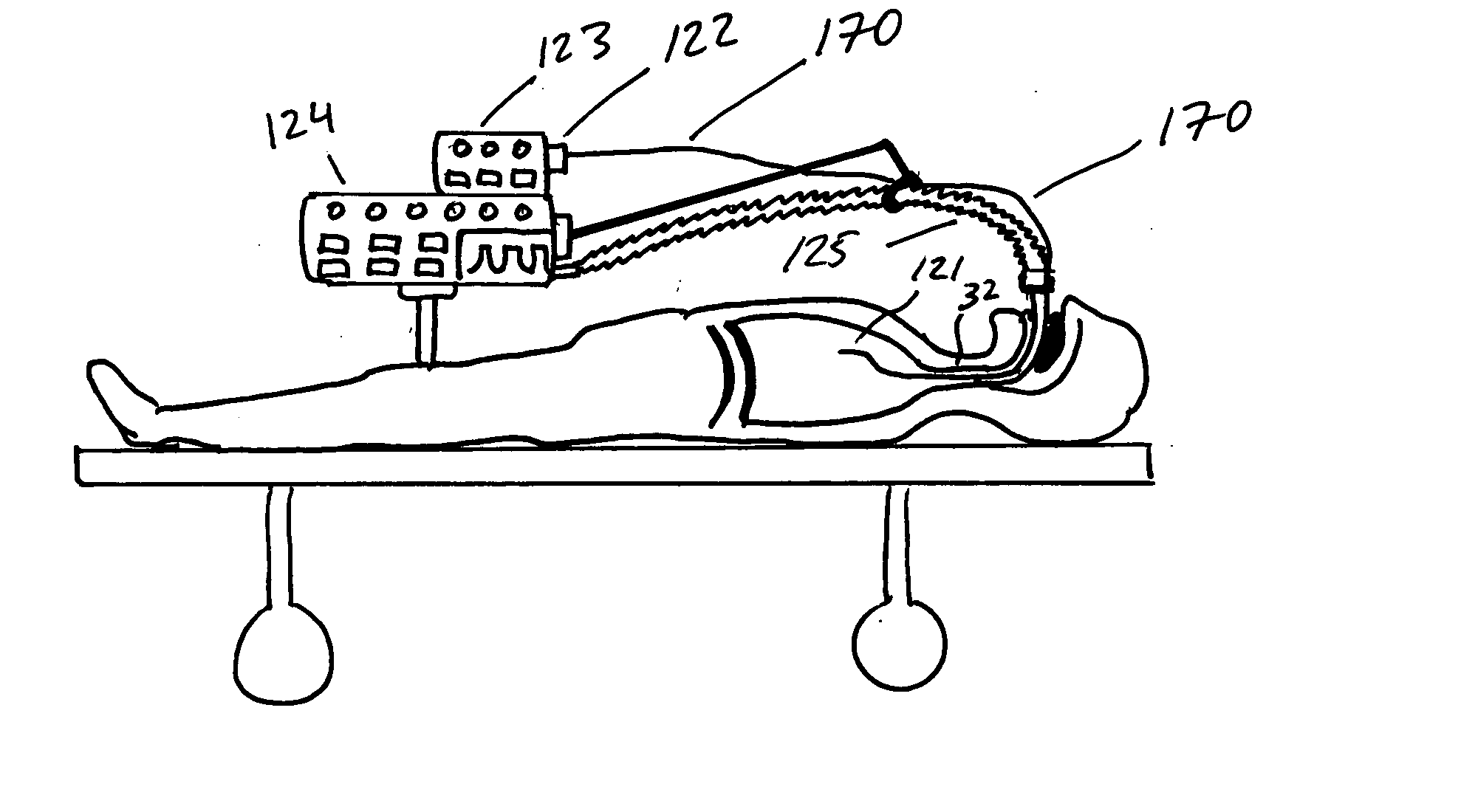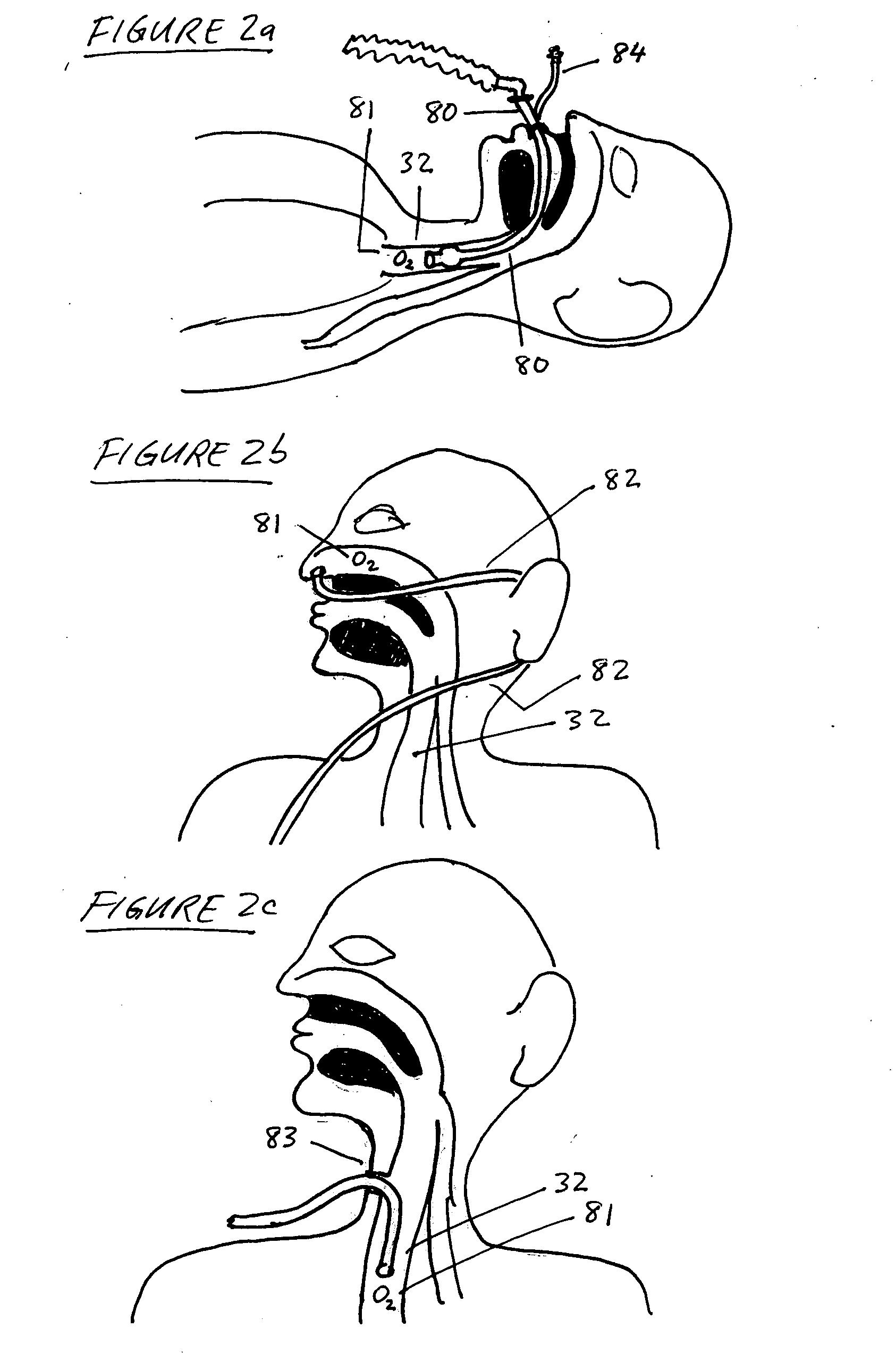Methods, systems and devices for improving ventilation in a lung area
a technology for lung area and ventilation, applied in the direction of valves, mechanical devices, operating means/releasing devices, etc., can solve the problems of reducing the surface area for gas transfer, reducing bulk air flow exchange, and sub>2 /sub>retention of trapped air, so as to facilitate the regulation of pressure in the ventilated segment, the effect of facilitating pressure and gas concentration
- Summary
- Abstract
- Description
- Claims
- Application Information
AI Technical Summary
Benefits of technology
Problems solved by technology
Method used
Image
Examples
Embodiment Construction
[0057] Referring to FIG. 1 the lung anatomy is described including the left 30 and right 31 lung, trachea 32, the left main stem bronchus 33, the five lung lobes 36, 37, 38, 39, 40, a lateral fissure 41 separating the left upper and lower lobe, and the diaphragm 42 which is displaced downward indicative of a hyperinflated emphysematous lung. FIG. 1a shows a cut away view of the left upper lobe bronchus 43, the apical segmental bronchus 44 of the left upper lobe, the parietal pleura 45, the visceral pleura 46 and the pleural cavity 47. Large bulla 48 are membranous air vesicles created on the surface of the lung between the visceral pleura 46 and lung parenchyma 51 due to leakage of air out of the damaged distal airways and through the lung parenchyma. The air in the bullae is highly stagnant and does not easily communicate with the conducting airways making it very difficult to collapse bullae. Pleural adhesions 49 are fibrous tissue between the visceral pleura 46 and the parietal p...
PUM
 Login to View More
Login to View More Abstract
Description
Claims
Application Information
 Login to View More
Login to View More - R&D
- Intellectual Property
- Life Sciences
- Materials
- Tech Scout
- Unparalleled Data Quality
- Higher Quality Content
- 60% Fewer Hallucinations
Browse by: Latest US Patents, China's latest patents, Technical Efficacy Thesaurus, Application Domain, Technology Topic, Popular Technical Reports.
© 2025 PatSnap. All rights reserved.Legal|Privacy policy|Modern Slavery Act Transparency Statement|Sitemap|About US| Contact US: help@patsnap.com



